Stories
Marie Stuttard

Marie Stuttard came to New Zealand in 1959 when she was 32. In her native Northern Ireland, she had already had a diverse career. After gaining a teacher’s diploma from the London Guildhall School of Speech and Drama, she acted in and wrote BBC radio plays, taught speech and drama and appeared in the early days of Northern Irish television.
Her perfect diction led her into the field of fashion where she compered fashion parades. She also worked as a journalist on the Belfast News Letter, founded in 1739 and thought to be the world’s oldest English language newspaper still in existence.
Two weeks after her arrival in New Zealand, Marie was employed as a staff writer on the New Zealand Woman’s Weekly where the editor Jean Wishart gave her free rein to immerse herself in the Auckland fashion scene. She reported on fashion for the magazine and, through fashion events coordinator Paddy Walker, "got into compering fashion shows". These ranged from community parades to promotional fashion shows for the likes of Kays Beauty Salon, held every six months to introduce a new Paris hairstyle. Floral decorations for the Kays’ shows were provided by Auckland society florist Berin Spiro. In 1961, the Auckland branch of the NZ Professional Mannequins Association staged a major fashion spectacular in the Auckland Town Hall for the Community Chest Appeal. It featured 18 models and was compered by broadcaster Cherry Raymond (summer fashions), Marie Stuttard (daywear) and Paddy Walker (gala gowns). Bruce Papas won the inaugural competition and was presented with the Golden Shears Award.
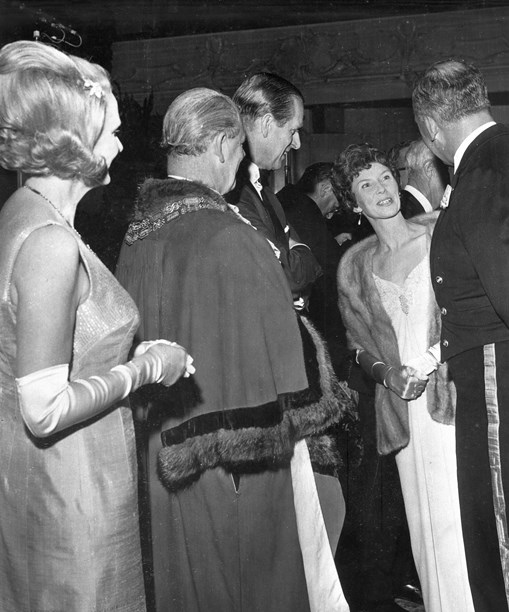
Marie Stuttard attending an Auckland civic reception during the Royal visit to New Zealand in 1963. Prince Philip, the Duke of Edinburgh, is on her right.
Shortly after television began in New Zealand, Marie fronted the first TV fashion ‘special’ wearing a one-shouldered scarlet chiffon dress she’d brought with her from Northern Ireland. The New Zealand Herald marked the occasion by publishing a photograph of Marie rehearsing for the show in the Channel 2 studio in Shortland Street.

Marie Stuttard in an advertisement for TEAL (Tasman Empire Airways Ltd), forerunner of Air New Zealand, early 1960s.
Then, as she put it, "along came Vogue". British Vogue had been printing an edition of Vogue New Zealand since 1957. Primarily a British publication with a few pages of New Zealand content, it was produced, edited and published in the UK. In 1960, production moved to Australia and Sheila Scotter, editor of Vogue Australia was put in charge of both publications. It was Sheila Scotter to whom Marie answered when she was appointed fashion editor of Vogue New Zealand in 1961.
Discussing her Vogue years with Cecilie Geary in 1987, Marie Stuttard described the early 1960s as a very exciting time. "New Zealand fashion was just beginning to get on its feet. With the information fed to us at Vogue from overseas, we were able to supply the local manufacturers with details about the latest styles, colours, fabrics and accessories. It was a service they were very glad to get as they’d never had anything like this before." Marie spent much of her time meeting with clothing manufacturers around the country, providing them with fashion updates.
When Marie joined Vogue, fashionable women still wore gloves with everything and foundation garments under everything. They wore hats, high heels, carried walking-length umbrellas and wouldn’t be seen in public without their makeup. The ladylike look of the 1950s prevailed, although a Vogue New Zealand cover in 1962 featuring young British model Jean Shrimpton indicated that change was on its way. Immaculately attired and coiffed, Marie, like the Babs Radon label she loved and frequently wore, epitomised 1950s formality. Kevin Berkahn, another of Marie’s favourite designers, remembers providing her with gowns for her fashion parade appearances, many of which, he says, were made on behalf of local charities. He also designed stylish outfits for her to wear on TV.
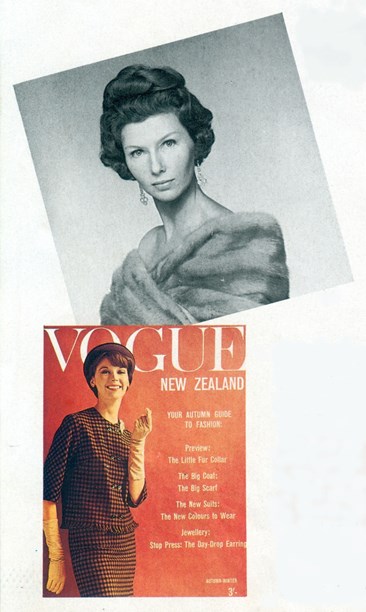
Portrait of Marie Stuttard, 1967. Vogue New Zealand cover 1962.
During Marie’s time at Vogue, New Zealand clothes were sent to Australia to be photographed by Vogue Australia as New Zealand photographers were not deemed experienced enough at that stage to meet the high standards required by Vogue publisher Condé Nast. "We were able to choose our own clothes for photography," Marie recalled. "But they had to tie in with the trends as dictated by the organisation overseas. That was the guiding light. Whatever we did had to be approved by Australia." Vogue New Zealand, which incorporated House & Garden, was edited in Sydney, printed in Melbourne and came out four times a year. The New Zealand personnel comprised Marie, a secretary and business manager Joan Kerr. Marie worked long hours and was often away from home. "I wouldn’t do it again," she said in an interview with Sandra Peacocke in ChaCha magazine in 1983, "but I wouldn’t not have done it, either, if you can follow my Irishism."
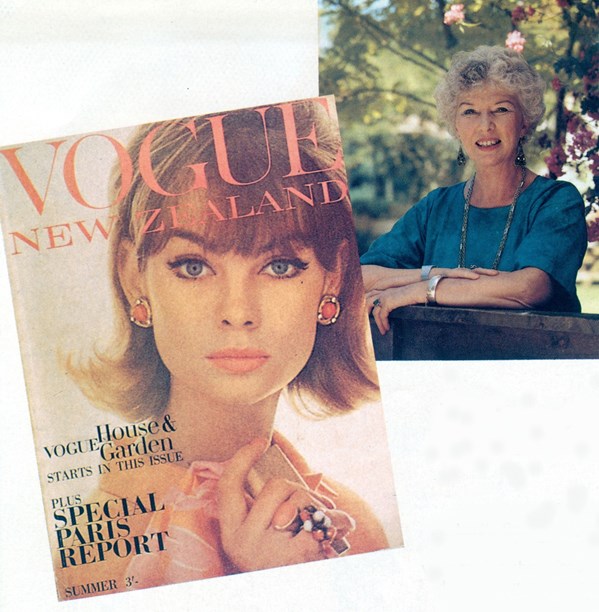
Marie Stuttard photographed by Desmond Williams, Taupaki, West Auckland, 1987. Vogue New Zealand cover 1962.
After what she described as "three remarkable years", Marie resigned from Vogue. Michal Walker was appointed as her replacement.
Marie opened her own editorial consultancy, a business she ran successfully for the next 12 years. Fashion continued to play a large part in her life. She worked for the New Zealand Wool Board as a communications consultant, joined forces with Paddy Walker to stimulate trade within the New Zealand fashion industry and wrote about fashion for the NZ Home Journal, Eve, NZ Woman and the Sunday News. Often called upon to judge fashion or millinery competitions such as the Golden Hat Pin Award, she herself was voted one of the 'best hatted' woman in New Zealand by the NZ Millinery Association in 1969. The honour was shared with five others including Joanna Porritt, daughter of the Governor General Sir Arthur Porritt and Elaine Daly (formerly Miscall) Miss NZ and runner-up to Miss World in 1963.
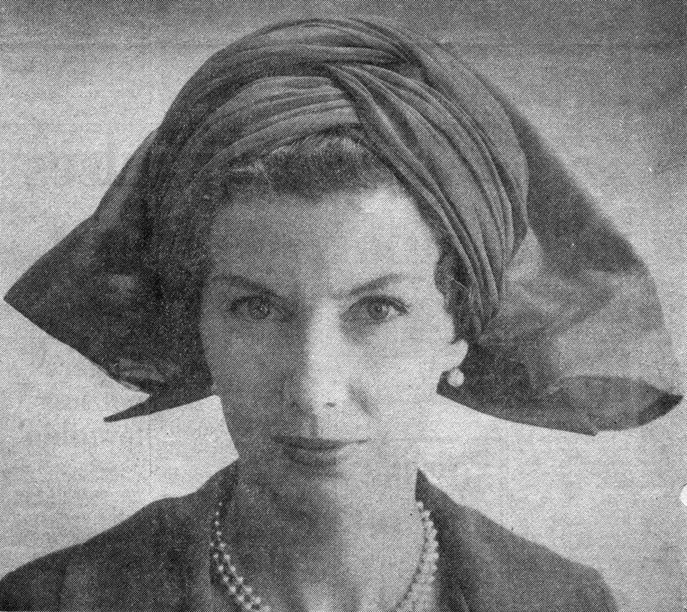
Marie Stuttard in 1969, the year she was voted one of New Zealand’s “best hatted” women.
In 1967, Marie wrote her first book, a tongue-in-cheek look at fashion which evolved from her memories of Vogue. She called it Fashion is Fun. "Everybody connected with Vogue took fashion so seriously," she explained. "And while I’m not saying fashion is frivolous, it does have a lighter side." A common-sense guide to planning a wardrobe, Fashion is Fun was whimsically illustrated by Elam School of Fine Arts graduate Clare Bowes. It subsequently inspired a 13-part television series which Marie hosted.
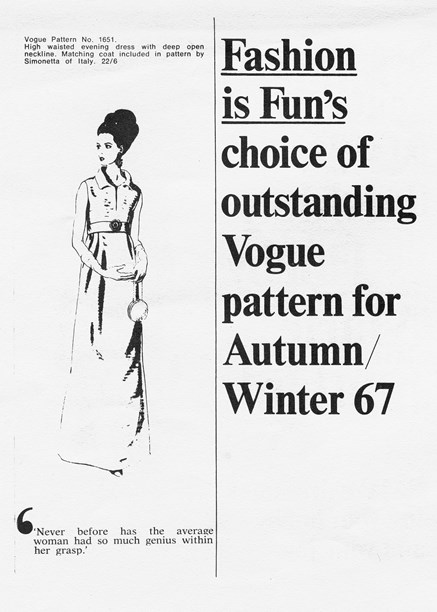
1967 Vogue pattern referencing Marie Stuttard’s book Fashion is Fun.
By the 1980s, Marie had turned her back on the fashion world, relocated from the city to Taupaki in West Auckland and returned to her other great love – speech. She published two books on the subject, trained business leaders in the art of public speaking and gave lectures on how to improve one’s verbal skills. Considering hats to be surplus to her new lifestyle, she donated her extensive model millinery collection to a children’s theatre.
Marie Stuttard also wrote books for children and a 10-episode radio serial which was broadcast on the ZB Children’s Hour in 1981. In 1984, in conjunction with TV dramatist Ken Catran, she developed the theme for the kidult television series Children of the Dogstar.
Marie Stuttard died in 2002 aged 75.
Text by Cecilie Geary.
Last published June 2016.